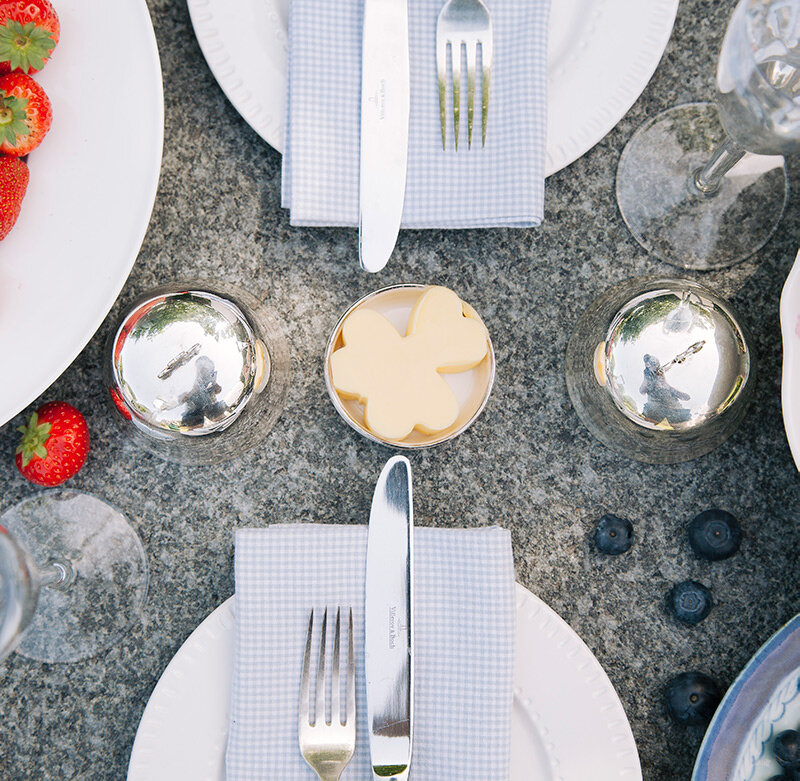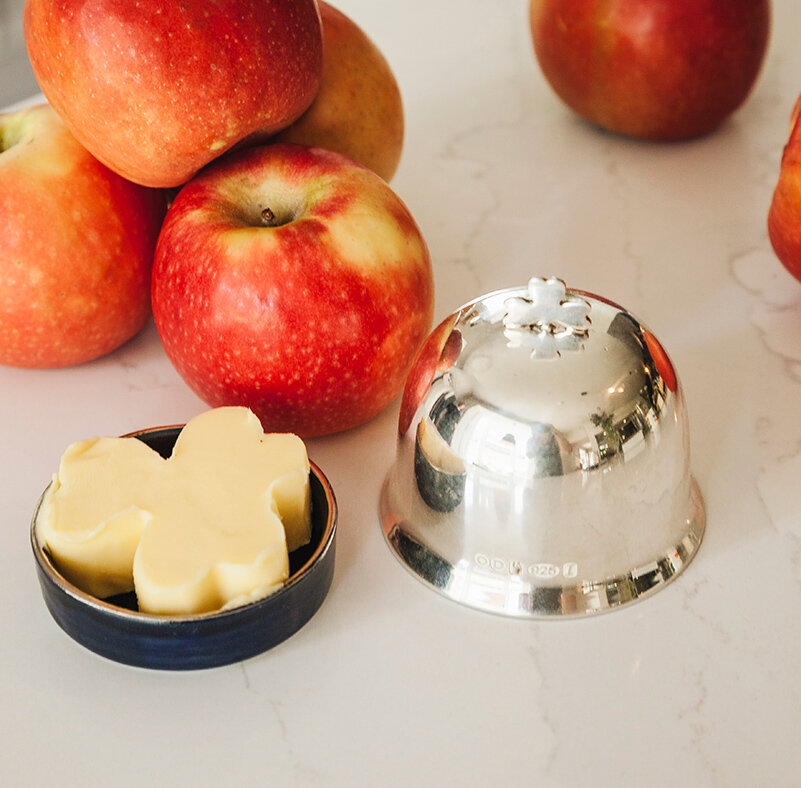The story behind the ORLA butter dish
To create the solid silver dome with feature shamrock accompanied by a hand-thrown porcelain dish - Orla worked with the best silversmiths still working in Dublin today. To set off the dome Orla decided upon the traditional symbol of Ireland - the shamrock.
An extensive research and development process created the form, colour and decorative finish of the hand-thrown porcelain dish that you see today, one which fully embodies the ORLA spirit and sets off the silver dome.
The dark inky blue is reminiscent of the waters of Ireland which is central to Ireland being an island, the Atlantic sea separating us from our nearest neighbour on the western side - America - and the silver lustre reinforces the relationship with the top.
Fine, elegant, and timeless, the ORLA butter dish will complement the tables of successive generations, while being highly functional - easy-to-use and easy-to-clean.
Watch the video above to view the process of creating the porcelain dish.
With thanks to Emma Rochford for her beautiful rendition of 'My Lagan Love'
Every porcelain dish is handmade from start to finish and takes over a week to complete.
Here Suzy our ceramic creative explains the process:
Step 1
Suzy 'throws' the clay on the wheel. Think the famous scene in Ghost !
Step 2
The dishes are then left to dry to a point where they can be ’turned’, i.e. trimmed to remove excess clay and to sharpen up the form. They are then left to dry out completely. This combined process takes about 48 hours.
Step 3
When they are dried fully, they are put into the kiln for the ‘bisque’ fire (slowly fired to c. 930’ C) to remove chemical water (‘vitrify’) and strengthen the form for glazing. The firing process takes about 48 hours to heat up and cool down.
Step 4
The bisque-fired pieces are removed from the kiln and dipped by hand into the glaze (liquid mixture of clay/silicas/coloured oxides), cleaned off and again put into the kiln for ‘glaze firing’. This time it fires to c. 1260’ C, another 48 hour wait… And more importantly, this is the stage where surprises can arise! Though you’ve developed a consistent glaze and firing process, glazes are achieved by the subtle interaction of the chemical components, the heat, and the time - and rarely will two firings, or even two pieces turn out exactly the same. We feel it’s part of the charm, a bit like families, hmm?
Step 5
This is the point that many pots would be ready for use, but we have gone a step further to achieve our perfect dish. When the glazed pots are removed from the kiln, we add the distinctive silver lustre that forges the visual connection from lid to base. It is carefully brushed on to the rim of the dish and put into the kiln for one final firing, this time to just 700’C. This lower firing rate only affects the lustre, allowing the brown liquid that has been applied, to heat up and become the bright and 'lustrous’ finish you see on the final product.




